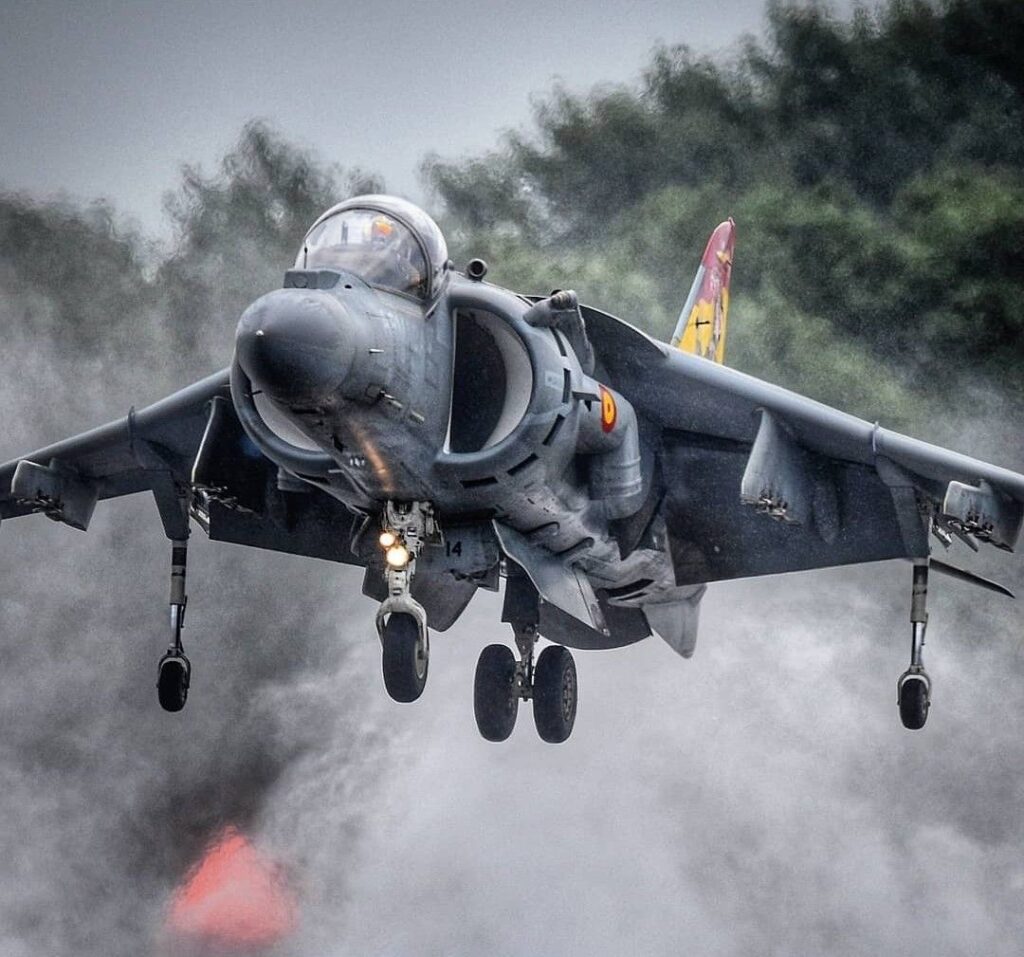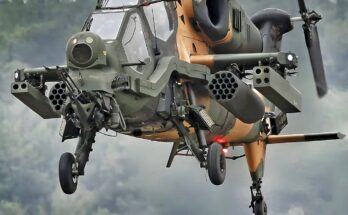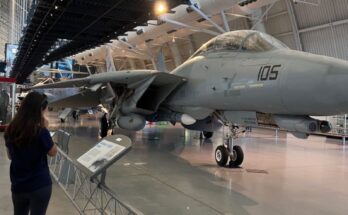
The AV-8B Harrier II is one of the most unique combat aircraft ever developed, famous for its ability to take off and land vertically like a helicopter. This feature, called V/STOL (Vertical/Short Takeoff and Landing), gives it an incredible advantage in operating from small runways, aircraft carriers, and even improvised forward bases close to combat zones.
Origins and Development
The AV-8B is a second-generation development of the original British Hawker Siddeley Harrier, which was the world’s first operational V/STOL jet fighter. In the late 1970s, the U.S. Marine Corps sought a more capable version with improved performance, payload, and avionics. McDonnell Douglas (now part of Boeing) partnered with British Aerospace to create the Harrier II, which first flew in 1981 and entered service in 1985.
Design and Capabilities
The Harrier’s most distinctive feature is its vectored-thrust Rolls-Royce Pegasus turbofan engine. The engine directs thrust through four swiveling nozzles, allowing the aircraft to hover, perform vertical landings, and take off from short strips. Pilots often refer to this maneuvering ability as “VIFFing” (Vectoring In Forward Flight), which can even be used tactically in air combat to quickly change direction.
The AV-8B was built with:
- Composite materials to reduce weight and increase durability.
- Large wing area for more lift and heavier payload capacity.
- Advanced avionics, including night attack systems and compatibility with precision-guided munitions.
Role and Combat Use
The U.S. Marine Corps has been the primary operator of the AV-8B, using it for close air support (CAS), ground attack, interdiction, and limited air defense. Its ability to operate from amphibious assault ships and forward bases made it a perfect fit for Marine expeditionary operations.
The Harrier II saw extensive combat use:
- 1991 Gulf War – flew thousands of sorties in close support and strike missions.
- Balkans (1990s) – supported NATO operations.
- Iraq and Afghanistan – provided crucial air support for ground troops.
Variants
- AV-8B Harrier II – baseline model.
- AV-8B+ (Harrier II Plus) – upgraded with a radar system (APG-65), allowing it to carry beyond-visual-range missiles like the AIM-120 AMRAAM.
- TAV-8B – two-seat trainer version.
Legacy and Replacement
While the AV-8B Harrier II proved to be an invaluable asset, its complexity, high maintenance demands, and limited speed compared to modern fighters led to its eventual replacement. The F-35B Lightning II, which also has V/STOL capability, is gradually taking over its role in the Marine Corps.
Even so, the Harrier remains iconic—a symbol of innovation in aviation. Its ability to hover, land on a dime, and deliver precision strikes has earned it a legendary reputation among pilots and ground troops alike.


